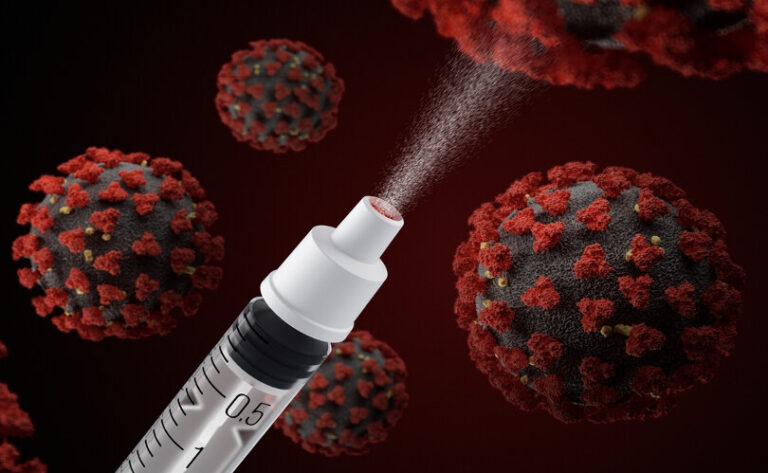The Unexpected Battle Between Vaccines and the COVID Virus

Humans appear to be fighting a never-ending battle against COVID-19 using vaccines that have so far been ineffective against the constantly mutating variants.
Perspectives on Health
Humans have been at odds with the SARS-CoV-2 virus since the unprecedented COVID-19 global pandemic began in January 2020.
A series of vaccine versions have been developed and distributed globally, beginning in January 2021 with the implementation of an mRNA vaccine based on the original Wuhan strain. Following that, a bivalent mRNA vaccine based on Omicron offspring was developed. The most recent version is based on XBB.1.5 and is ready for injection into people’s arms.
Bivalent vaccines have two distinct components. One component guards against the original viral strain, while the other guards against the most recent variants.
The vaccine is based on the gene code of a known virus, and the typical lead time for vaccine development is 10 years. Even with the current “green-light” policies for COVID-19 vaccines, the first generation takes nearly a year to launch, and the second and third generations take a few months.
However, due to SARS-CoV-2’s basic survival abilities, the virus is constantly mutating in order to avoid detection by a vaccine. Even before a vaccine is ready for use, a few mutants have discovered a way to avoid the antibodies induced by the slow vaccine, resulting in the next wave.
Regardless, the unprecedented rate of vaccine development will be unable to compete with the rate of viral mutation, as the virus is always one step ahead of the vaccine.
This is why even the most eminent scientists are unable to predict how the virus will evolve and when the next wave will occur.
SARS-CoV-2 Variants
A number of major SARS-CoV-2 variants emerged between 2020 and early 2021: Alpha (B.1.1.7), Beta (B.1.351), Gamma (P.1), and Delta (B.1.617.2).
Omicron (B.1.1.529) was first reported in South Africa in November 2021, and it quickly evolved into a few sister lineages: BA.1, BA.2, BA.4, BA.5, XBB.1.5, EG.5, and HV.1, which each took the stage, one after the other, within a few months.
- BA.1 and BA.2 were discovered in February 2022.
- BA.4 and BA.5: discovered in May 2022.
- XBB.1.5 (Kraken): a child of two BA.2 sublineages discovered in October 2022.
- BA.2.86 (Pirola) was discovered in 2023 and is currently being tracked.
- Eris (EG.5) was discovered in February 2023, peaked in October, and is now declining.
- HV.1: first identified in July 2023, took the lead in the United States by the end of October 2023.
The war between the virus and human technology has turned into a marathon. Who were the winners in each generation of vaccine development?
First Generation Vaccine: Delta Emerged, Creating Global Havoc
The original mRNA monovalent vaccines developed by Pfizer and Moderna and based on the old Wuhan strain were launched at rocket-like speed in January 2021.
When more than half of the US population had received two doses of these vaccines by June 2021, the stage was set for various mutants, including the well-known alpha and delta variants, to take over.
In alpha, a key mutation in spike protein called N501Y, which allows vaccine protection to elude detection, was discovered. It was also discovered in two other major variants prevalent at the time, and the rate at which it spread significantly increased.
Delta (B.1.617.2) emerged shortly after and demonstrated even greater transmissibility and vaccine escape ability with its intriguing spike protein double mutations of L452R and E484Q, refreshing the viral spreading and escaping records. The World Health Organization (WHO) designated it as a “variant of concern” on May 11, 2021.
Due to these double mutations in the spike protein, vaccine-induced antibodies lose their ability to bind to delta, resulting in immunological evasion and major global havoc.
Delta’s increased binding affinity makes it much easier to replicate in human cells. Patients infected with delta had a viral load 1000 times higher than patients infected with the original strain, according to reports. It can also spread twice as quickly as the original SARS-CoV-2 virus.
Preliminary data from Israel revealed in July 2021 that Pfizer’s vaccine efficacy had been significantly reduced at five and six months after vaccination, to 44 percent and 16 percent, respectively.
In a July 2021 outbreak in Massachusetts, fully vaccinated people accounted for 74% of the breakthrough infections, and the delta variant was found in 90% of them.
When the first generation of the COVID-19 mRNA vaccine met the unexpected delta variant, the first round of the vaccine-virus battle ended with an overwhelming vaccine failure.
The First Battle Round Between Vaccine and Virus
Vaccine is one-sided.
As a result, the vaccine was ineffective.
Seven months passed between the first monovalent vaccine launch in January 2021 and the dominant delta wave in July 2021 in the United States.
Scientists, including Michigan State University researchers, have expressed concern about the vaccine strategy of generating vaccine escape variants since then.
Second Generation Vaccine: XBB.1.5 Won
Even after boosters were widely distributed, people saw the original vaccine’s effectiveness against delta deteriorate. The government repeatedly emphasized that the original vaccines were sufficiently effective.
Almost all of Omicron and its subvariants have developed mutations that allow them to spread faster while evading our immune response. According to this Nature review, it is clearly defined as an immune escape strain.
Omicron (B.1.1.529), a surprising virus, spread faster than any previous strain and completely took over by April 2022. The emergence of a hypermutated, more transmissible Omicron variant posed a significant threat to the vaccine strategy.
It has several amino acid mutations in the spike (including Q498R and N501Y) that significantly improve ACE2 receptor binding. It has also changed the cell entry pathway, which contributes to its ability to avoid vaccine protection.
BA.4 and BA.5 Omicron lineages were the dominant COVID-19 variants in the United States in mid-2022, and they were expected to circulate in the second half of 2022.
As a result, Pfizer and Moderna jumped at the chance to create bivalent boosters based on the original Wuhan and Omicron BA.4 and BA.5 strains. They completed it in yet another miraculously short time frame of only a few months.
The FDA approved bivalent booster shots of COVID-19 mRNA vaccines designed to target the Omicron subvariants BA.4 and BA.5, with Pfizer only providing data on eight mice, on August 31, 2022.
However, Omicron is constantly changing, dividing into more diverse subgroups. BA.4 and BA.5 vanished soon after the new bivalent vaccine was introduced.
A new variant, XBB.1.5, first appeared in October 2022 and peaked in April 2023. It combines two Omicron descendant lineages (BA.2.10.1 and BA.2.75). The featured new spike protein mutation (F486P) results in increased transmissibility and significant vaccine escape.
Not surprisingly, after only three months, antibody levels to XBB.1.5 in bivalent mRNA-boosted individuals had declined significantly to pre-booster levels. According to CDC data collected from September 2022 to April 2023, the bivalent booster vaccine’s effectiveness against COVID-19-associated hospitalization dropped to as low as 24% six months after vaccination.
The second round concluded in April 2023, when the second generation bivalent mRNA vaccine encountered the XBB.1.5.
The Second Battle Round of Vaccine vs. Virus
Bivalent mRNA vaccine.
As a result, the vaccine was ineffective.
Time lapsed: Five months after the bivalent booster vaccine was introduced in September 2022, it was used until the U.S. dominant wave of XBB.1.5 emerged in January 2023.

Third Generation Vaccine: Doomed to Fail
Pfizer-BioNTech and Moderna mRNA vaccines have been reformulated for the third time as of September 2023, this time based on XBB.1.5, Omicron’s great-grandchild. This most recent booster recommendation is for everyone, regardless of previous COVID-19 vaccination history.
However, one month before the 3.0 vaccine was approved, the dominant virus had changed from XBB.1.5 to EG.5—the “Eris” variant, which spreads faster and is more resistant to the XBB.1.5 vaccine.
Vaccine vs. Virus: The Third Battle Round Vaccine: XBB.1.5 mRNA.
As a result, the vaccine is doomed to fail.
Time elapsed: Less than one month from the launch of the XBB.1.5 booster vaccine in October 2023 to the dominant wave of vaccine escape by EG.5 or other cousin variants in October 2023 in the United States.
Omicron continues to evolve from XBB to JN, HK.3, EG.5, and HV.1, all of which are members of the vast and diverse Omicron family.
EG.5, which has an additional F456L mutation, is significantly more resistant to neutralization by vaccinated people’s sera. That means that even the most recent version of the COVID-19 vaccine based on XBB.1.5 will be rendered ineffective against EG.5. Because the risk of transmission remains high, the WHO classified EG.5 as a “variant of concern” in early August.
While HV.1 shares almost all of the spike mutations found in EG.5, it also acquired a surprising additional mutation (L452R) from a distant ancestor delta variant in 2011, which had previously been absent in the omicron variant. HV.1 is even more evasive than EG.5 in terms of evading the XBB.1.5-based vaccine-induced immunity.
JN.1 will use the same detour trick as HV.1 when it arrives in August 2023. It gains an additional L455S mutation, reverting to the BA.2.86 (Pirola) sublineage.
The HK.3 virus has pulled off an unusual ruse. It has two mutations in the adjacent spike 455 and 456 positions (L455F and F456L), causing it to be referred to as a “FLip.” This virus, when combined, binds even more tightly to ACE2 and is slowly spreading in Brazil and Spain.
Both HK.3 (FLip) and JN.1 have lower binding affinities, implying that the vaccine is even less effective than the current version, raising additional questions about vaccine strategy.
All of these new variants are the direct result of vaccine-escaped viral mutations.
Despite the extraordinary speed with which vaccines against COVID-19 have been developed and the ongoing mass vaccination program, the constant emergence of new SARS-CoV-2 variants threatens to significantly undermine the vaccine’s intended effects.
The fight between vaccines and the virus is exhausting. There are clear winners and losers. The SARS-CoV-2 virus variants’ microscopic tricks are far superior to the vaccines’ unproven technology.
Scientists have issued alerts and discussed major concerns as early as 2021 in top-ranked journals such as The Lancet and Nature, as well as Nature Reviews, eBioMedicine (part of The Lancet Discovery Science), and other publications through 2023.
According to popular belief, the pressure exerted on viruses by repeated vaccination programs is a primary driver of the diverse variants of SARS-CoV-2.
Humans will continue to fail if they continue to develop vaccines based on these emerging new variants. How many more failures will it take for scientists to realize that all of their vaccine efforts have been futile?
It is time for rational thought to pause and reflect on determining the root cause of the viral infection.
Our natural immunity provides us with a dynamic shield of defense against serious viral attacks. Only by confronting our own innate immunity will the virus’s tricks be rendered ineffective.





